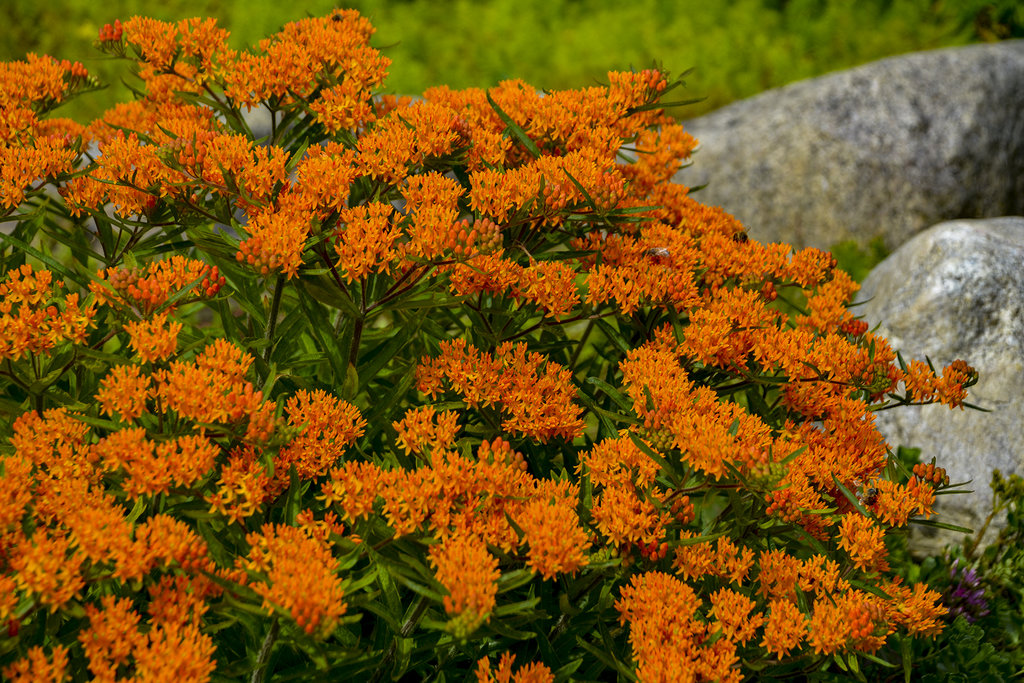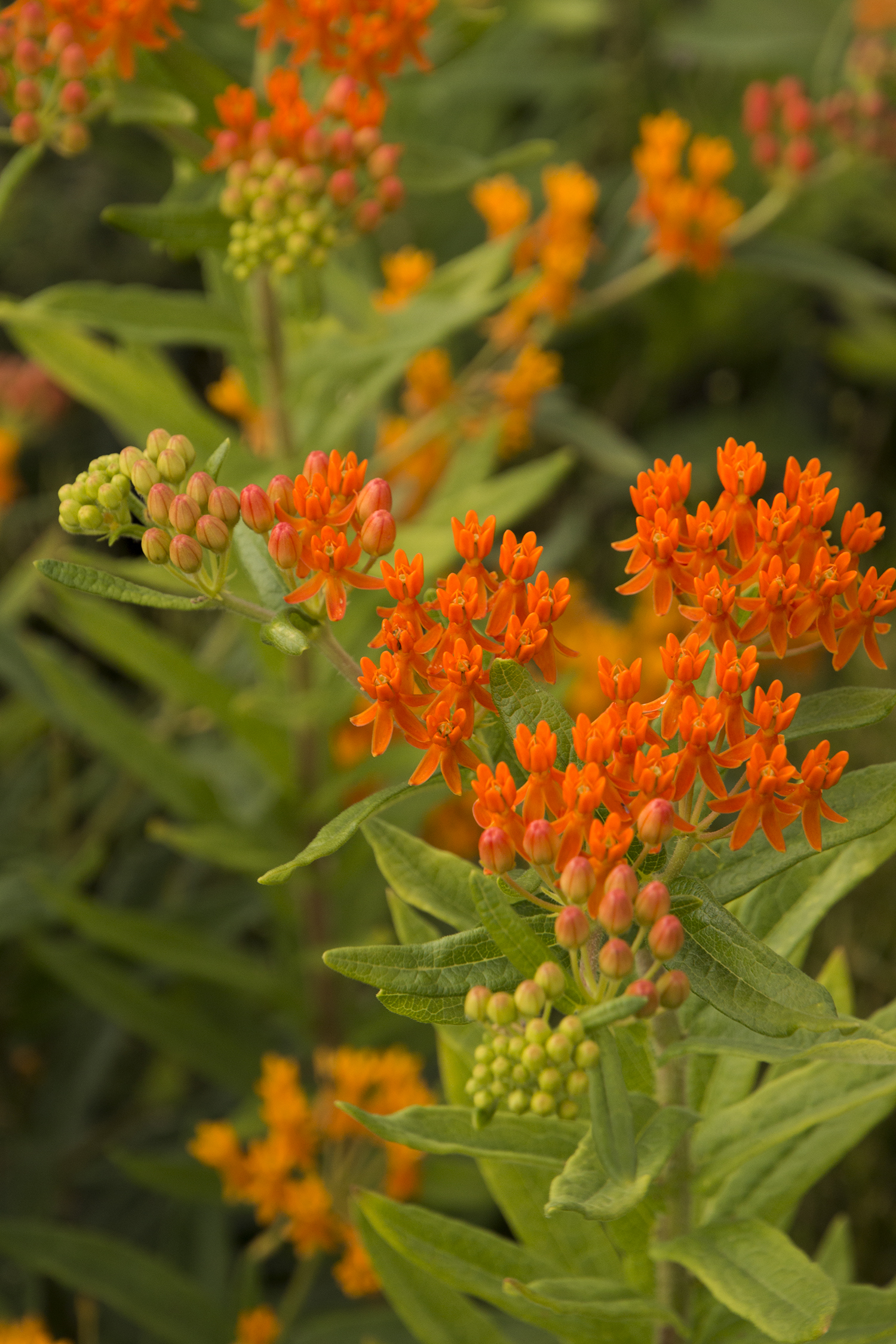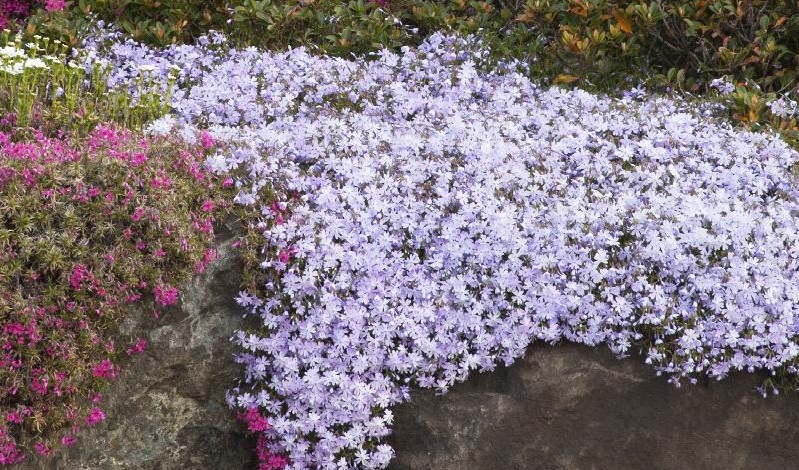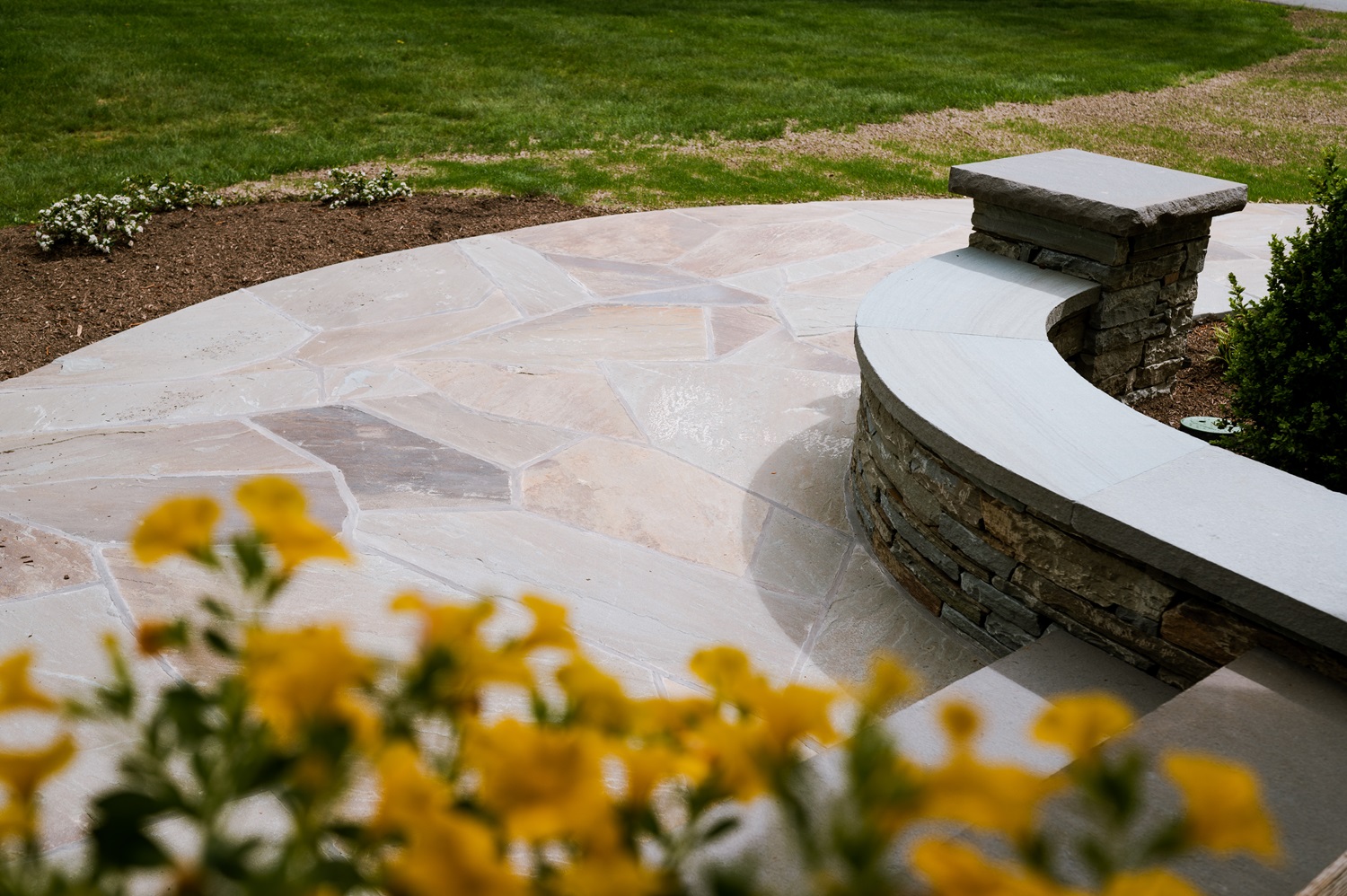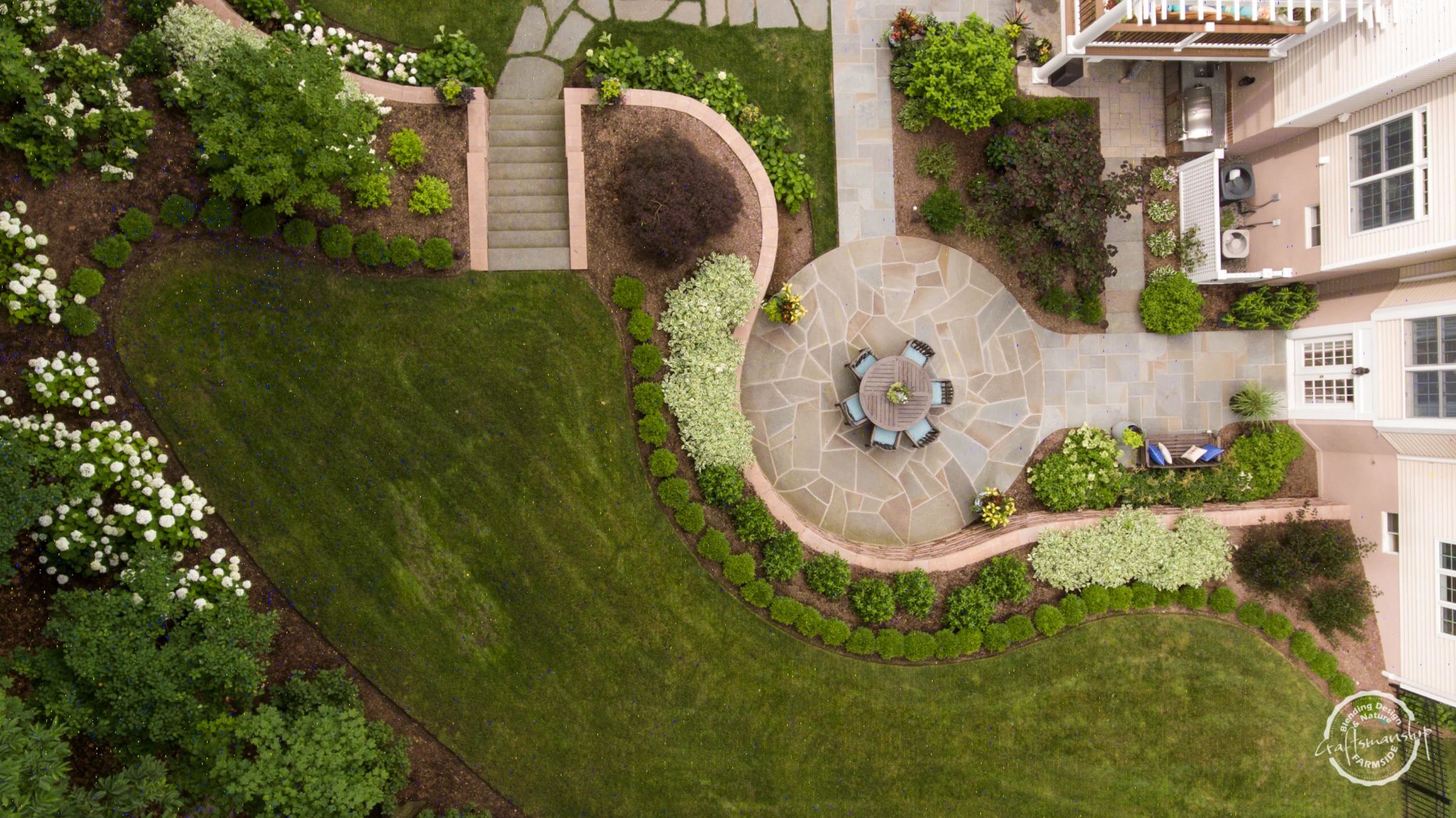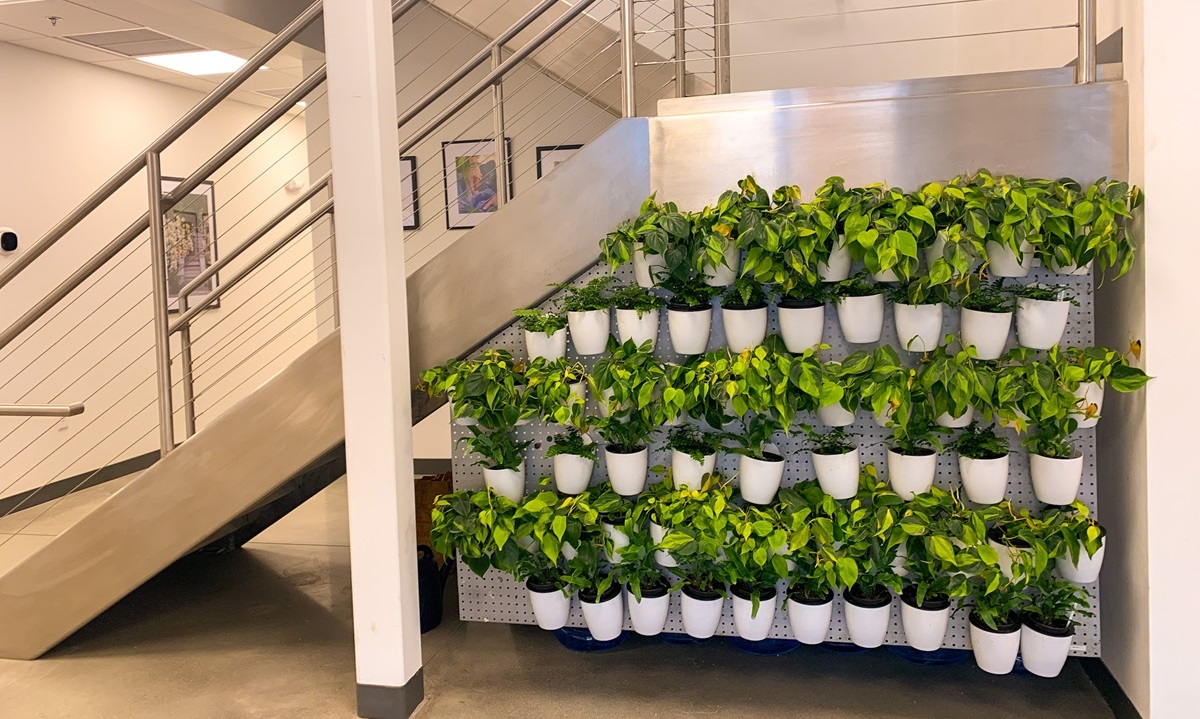When it comes to flowers that can take the heat, these native beauties shine during summer.
Cardinal Flower – (Lobelia Cardinalis) is a native herbaceous perennial that is a member of the bellflower family (Campanulaceae) and named for the brilliant red color of the Roman Catholic cardinals’ robes. With its towering stalks that can reach between 3-6 feet in height and vivid red, bottle brush-like flowers, Cardinal Flower makes quite a statement in the landscape. The plant’s inflorescence, or arrangement of flowers on the floral axis, is covered with numerous blooms that open from bottom to top over several weeks. Though there are varieties that have white or pink flowers, it is the more common bright red blooms that make the Cardinal Flower a favorite plant among hummingbirds. Helpful pollinators such as bees are also attracted to the plant while rabbits and deer are not – more good reasons to consider this plant for the landscape!
Cardinal Flowers thrive near water, making this plant a great choice along the edges of ponds or streams, and they’ll naturalize in moist meadows. The tall flower stalks may need to be staked if their location exposes them to strong winds. The plant’s shiny leaves are usually green, sometimes tinged with bronze, but varieties such as Proven Winner’s “Vulcan Red” have deep purple foliage, against which the red flowers are beautifully showcased. The plant blooms from mid-summer through early fall.
Grass Pink Orchid – (Calopogon Tuberosus) is a delicate, sweetly-fragranced orchid native to eastern North America. In the northern regions of the United States, these orchids dot wet boggy areas, grasslands and savannas with brilliant pink or white flowers in the summer, the blooms rising above the plant’s grass-like leaves. It grows to a height of 2 ½ – to 4 feet, with 2 or more flowers on the stem, often emerging from peat or sphagnum moss.
Typically, when an orchid flower opens it twists or “resupinates” so that the attachment of the “lip” is below that of the other two petals. This is to attract pollinators and provide them with a kind of landing pad for them. The Grass Pink Orchid is a non-resupinate, meaning the flower doesn’t twist upon opening, and the lip remains on top. There are tiny, yellow, brush-like spikes on the lip that look like they’re brimming with pollen – but they’re not. In fact, they’re a ploy to attract bees.
Charles Robinson detailed the rather unique way pollination works in Calopogon, in the Botanical Gazette of 1887. He noted that in Calopogon the third petal (the labellum) rises vertically. The organ containing the pollen-receptive stigma and pollen-producing anthers (the column) juts out horizontally below the labellum, with the stigma and anthers facing upward. The bee grabs at the spike to get to what it thinks is pollen, but finds that the flower folds downward, flipping its fuzzy back onto the stigma and real anthers with pollen.
The column has raised sides like a playground slide. The bee slides down the board on its back, delivering any pollen from its back to the stigma. The stigma applies a sticky substance to the bee’s back so when the bee brushes over the anthers, the outbound pollen sticks there. The bee has to squirm out of the tight confines of the flower to escape and it pollinates the flower in the process.
Milkweed – (Asclepias) Milkweed, named for the sticky, white sap that oozes from the plant’s leaves when damaged, is the only plant upon which the Monarch butterfly lays its eggs. Its fragrant flowers, that appear between June and July, also attract bees, hummingbirds and other pollinators who like the sweet nectar of this native, herbaceous perennial. The milky sap of the plant contains cardenolides, a toxin that is harmful to people, pets and livestock, so care should be taken when determining where to plant Milkweed in your landscape if you have small children and/or pets.
As with most plants, opting for native varieties is a smart practice since they are adapted to local conditions. Landscaping with natives helps to establish and maintain a healthy ecosystem. Here are some Milkweed species native to the Northeast to consider for your garden:
Common Milkweed (Asclepias Syriaca) Has large flowers that range in color from white to a deep, purplish pink. It grows to a height of 36”-48” and prefers well-drained soils. It’s worth noting that deer and rabbits enjoy snacking on it.
Swamp Milkweed (Asclepias Incarnate) As the name would indicate, Swamp Milkweed thrives in damp, marshy areas. Proven Winners’ “Cinderella” is a variety that reaches a height of 36”-60” with pretty, rose-pink blossoms.
Butterfly Weed (Asclepias Tuberosa) This popular variety has brilliant orange blooms, grows to a manageable height of 24” and prefers well-drained soils. Proven Winners offers a variety called “Hello Yellow” that has sunny yellow blooms.
Whorled Milkweed (Asclepias Verticillata) Found primarily in prairies and other open areas, Whorled Milkweed has skinny, “whorled” leaves with white/greenish-white flowers. It’s bloom time (July-September) is later than other Milkweeds and unlike many other Milkweeds, is deer and rabbit-resistant.
Poke Milkweed (Asclepias Exaltata) Appears naturally in woodland areas and thrives with indirect/dappled light. Clusters of white flowers appear on slender stalks that can reach 5 feet in height. Rabbits like this one.
Main Image Credit: Proven Winners

